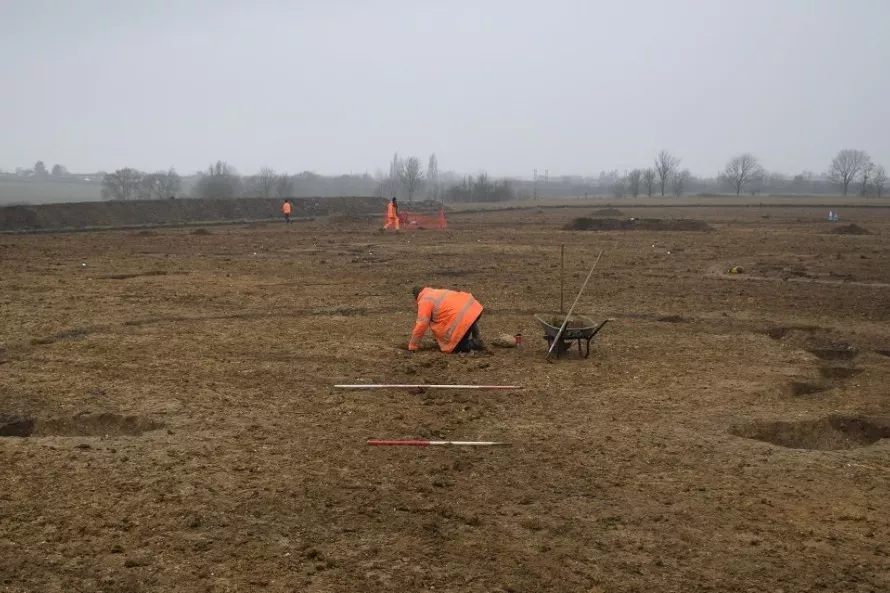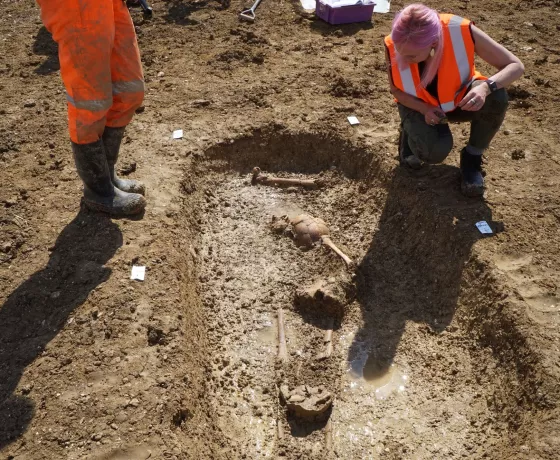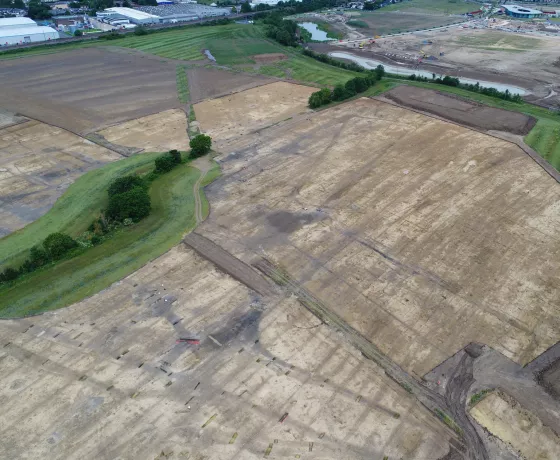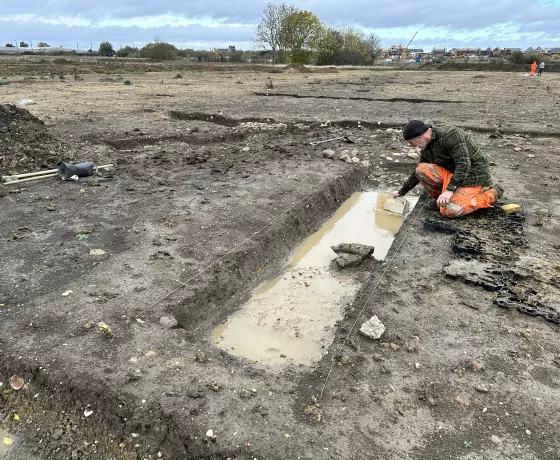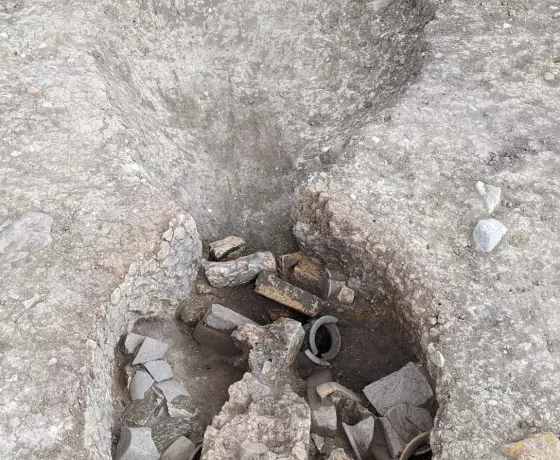The work at site 3 at Wintringham started at the end of 2021. We spent these initial winter months removing the topsoil to uncover the site for excavation and starting to excavate the areas with less archaeology. The time has flown by and this summer we're getting stuck into the main areas of interest. We expect to be on site until November 2022 at the earliest, continuing to excavate and record the remains of a large Iron Age and Roman settlement situated on the crest of a prominent ridgeline east of St Neots and just south of the current Wintringham development.
So far the team of archaeologists on site have been concentrating on the eastern and western halves of the site (near the A428 and railway line, respectively). Now the weather is better we are looking to begin works in the "busy" parts of the settlement located in the centre of the field. We have finished working with the machinery and now our team of archaeologists are continuing to hand excavate and record the archaeology revealed, improving our understanding and knowledge of the local area's history.
A view of Site 3 looking towards the A428, with the team hard at work. The dark lines are Iron Age ditches forming part of a trackway and enclosure.
The archaeology we are finding so far dates to the Middle to Late Iron Age (approximately 2,400 to 2000 years ago) and we are just beginning to uncover activity from the Roman period (2000 to 1600 years ago). What we are looking for is changes in the soil colour, which are evidence for ditches, pits, post holes and other features which have since infilled. These archaeological "features" are then hand dug and artefacts recovered from them, which helps us date the archaeology and interpret what happened on site: i.e. the age of the settlement, the size, what activities were undertaken, what farm animals were kept at the site, etc.).
We have had a team of 10 to 20 professional archaeologists on site for the first half of the excavation, and a similar sized team will be on site for the rest of its duration. The hard work of hand-digging the archaeology is well worth it, with pottery, animal bone, cereal grains, and occasionally the odd coin being recovered. The finds are taken back to our office to be washed, counted and weighed, before a specialist reviews the finds and provides further information on them which we can then use in our reports.
The work at Wintringham is important, as the excavation works cover one of the largest Iron Age and Roman settlements in Cambridgeshire to-date. We will provide a series of posts on this blog during the Festival of Archaeology and hope to provide updates several times a month going forward. These updates will be blog posts from one of the on-site archaeologists, allowing you to see what the day-today job of an archaeologist entails and we hope to show you some photos of pottery and animal bone we are finding on site.

A tiny Early Roman brooch recovered from Wintringham Site 3 - a photo from when it was lifted from the ground.
Other posts in this collection
Read our latest posts about the archaeological investigations at Wintringham.

